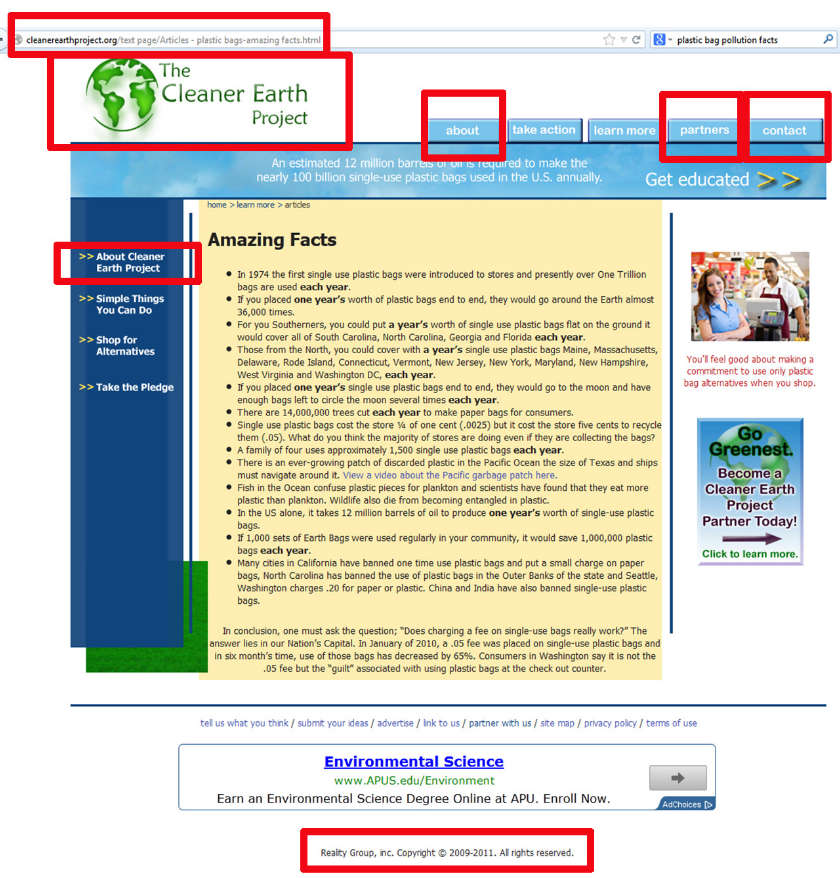[includeme file=”infofeed_menu.html”]
[threecol_one]
Evaluating Information: Authority
[unordered_list style=”arrow”]
- Who is supplying the content?
- What are the author’s credentials?
- Is this a personal or official publication (or website)?
- Has this source been cited?
Who is the author? Who is the publisher?
Credentials do not provide authority across the board but apply to a specific area of expertise (e.g. an author with a PhD in Physiology is not necessarily qualified to write about parenting skills).
A personal publication / website is unlikely to include a rigorous review process and/or experts that act as editors. On the other hand, a sponsored publication / website is more likely to include a perspective that might lead to bias.
Was it cited by any of your other sources (or your class readings)?
[/unordered_list]
Evaluating Information: Accuracy
[unordered_list style=”arrow”]
- Are citations used?
- Is a bibliography / works cited available?
- Does the information appear complete?
- Are there grammar and/or spelling errors?
- How was data collected?
- Can the information be verified?
- Has the information been reviewed?
This is the easiest way to check on a source’s accuracy.
A bibliography makes it clear that an author wants his/her work checked for accuracy.
Compare it to a source you already know is safe to use.
All statistics should be cited or explained.
Using background information and reliable sources, can you support the information presented?
Is an editor listed? Is the information self-published?
[/unordered_list]
[/threecol_one]
[threecol_two_last]
Authority & Accuracy
Explore the image below — mouseover the targets to learn more about the anatomy of a trade publication. This example uses an article from a trade journal, but the characteristics discussed also apply to some magazines, and newspapers.
Callari, James J. "Making Old Bags New Again." Plastics Technology (2012): 36-41. Academic Search Premier. Web. 30 Jan. 2013.


.edu = educational institution e.g. american.edu
.gov = government agency e.g. epa.gov (the Environmental Protection Agency URL)
.com = commercial (or for-profit)e.g. amazon.com
.org = organizational (or non-profit)
e.g. un.org (the United Nations URL)' type="text">Check: URL / domain name
The URL can give you more information about the content you're viewing.
.edu = educational institution e.g. american.edu
.gov = government agency e.g. epa.gov (the Environmental Protection Agency URL)
.com = commercial (or for-profit)e.g. amazon.com
.org = organizational (or non-profit)
e.g. un.org (the United Nations URL)


Look for: "About" or "More Information"
Before using a source you need to know who is responsible for the content. The "About" page should give you more information about the author and/or organization.
If a site doesn't have an "About" section, you should not consider using it as a source.

Use any information provided to determine the authority of a source.
Find out who may sponsor and/or influence the content you would like to use.

